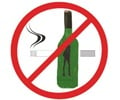New research suggests regulating alcohol outlet density is an effective strategy for reducing excessive alcohol consumption.

"Excessive alcohol use is the third leading cause of preventable death in the U.S., and responsible for approximately 80,000 deaths annually," said lead study author David Jernigan, PhD, CAMY director. "Public health agencies are on the frontlines of addressing the toll alcohol misuse has on the public’s health, and are therefore well-positioned to inform communities about the benefits of addressing alcohol outlet density in their communities." The report notes that the public health profession has a tradition of promoting health and preventing harm through the use of evidence-based strategies, including land use and zoning codes.
"Despite this tradition and evidence supporting regulation of alcohol outlet density, many public health professionals are unaware of its potential and do not know how to work with local authorities to implement the strategy," said Jernigan. The authors cite several examples of the significant relationship between alcohol outlet density, consumption and harms: in Los Angeles County, researchers estimated that every additional alcohol outlet was associated with 3.4 incidents of violence per year, and in New Orleans, researchers predicted that a 10 percent increase in the density of outlets selling alcohol for off-premise consumption would increase the homicide rate by 2.4 percent.The report provides four ways in which states and localities can reduce alcohol outlet density: Limit the number of alcohol outlets per specific geographic unit; limit the number of outlets per population; establish a cap on the percentage of retail outlets per total businesses in a specific area; and limit alcohol outlet locations and operating hours.
In addition, localities may use land-use powers to limit, deny or remove permission to sell alcohol from existing outlets.A previously released Action Guide, Regulating Alcohol Outlet Density http://www.camy.org/action/Outlet_Density, developed by CAMY and Community Anti-Drug Coalitions of America (CADCA) – the nation’s leading substance abuse prevention organization, representing over 5,000 community anti-drug coalitions across the country – outlines nine specific steps community coalitions and public health departments can take to educate and inform policy makers. "By providing the data necessary to inform policy decisions and building partnerships with community coalitions, state and local health departments can offer critical support to states and localities in these efforts," said report co-author Evelyn Yang, deputy director of Evaluation and Research at CADCA. "Since the publication of the Guide, we’ve collected several case studies of local health agencies and community coalitions effectively working to regulate alcohol outlet density," stated Jernigan. "With increased uptake by more agencies, communities can become healthier, safer places to live and work."
Source-Eurekalert















